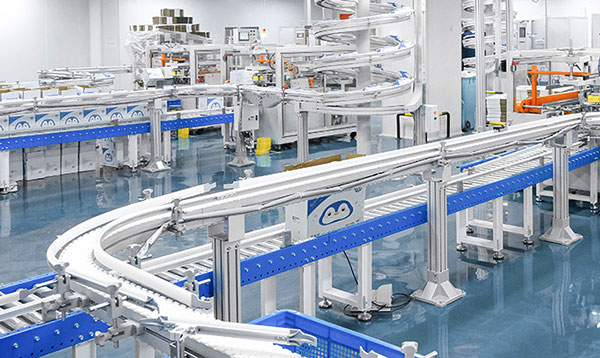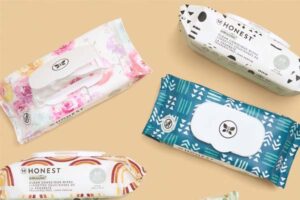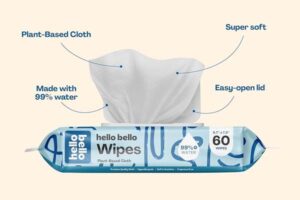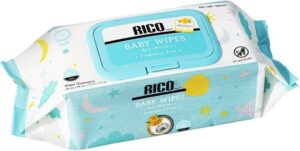
Walk through any US hospital or school, and you'll find alcohol wipes1 in every first aid kit. But where are they actually made?
Yes, 37% of alcohol wipes sold in America are domestically produced. Major manufacturers include established pharma suppliers (like PDI Healthcare) and private-label specialists offering custom formulations.
What alcohol is used in alcohol wipes?
Not all alcohols work equally for disinfection. The choice impacts effectiveness and safety.
Most US-made alcohol wipes use 70% isopropyl alcohol2 (IPA) or ethanol. IPA dominates medical settings (83% market share) due to faster evaporation, while ethanol sees more cosmetic use.

Alcohol Concentration Comparison
| Type | Common Use | Kill Time (Bacteria) | Skin Safety |
|---|---|---|---|
| 70% IPA | Medical disinfection | 30 seconds | Dries skin |
| 60% Ethanol | Surface cleaning | 45 seconds | Less harsh |
| 75% IPA | Lab equipment | 20 seconds | Not recommended |
The 70% concentration isn't random. Higher percentages evaporate too quickly to penetrate cell walls, while lower concentrations lack sufficient disinfecting power. Hospitals prefer IPA for its:
- Cost efficiency (22% cheaper than ethanol solutions)
- Non-staining properties
- Compatibility with medical plastics
What is similar to alcohol wipes?
When alcohol isn't suitable, alternatives must meet specific needs.
Hydrogen peroxide wipes (3% solution) and benzalkonium chloride wipes3 effectively replace alcohol wipes for sensitive skin or electronic device cleaning, though with longer kill times.
Alternative Comparison Chart
| Product | Best For | Contact Time | Limitations |
|---|---|---|---|
| Chlorhexidine wipes | Pre-surgery prep | 2 minutes | Doesn't kill viruses |
| Quaternary Ammonia | Food surfaces | 10 minutes | Leaves residue |
| Essential Oil Blends | Aromatherapy | N/A | No EPA-approved claims |
Nursing homes increasingly use benzalkonium chloride wipes (up 19% since 2020) for daily patient care. These:
- Cause 43% less skin irritation than alcohol
- Leave residual protection (4-6 hours)
- Require 60-second contact time for full efficacy
What are Clorox wipes made of?
The blue-and-white containers contain more than just simple solutions.
Clorox® Disinfecting Wipes use alkyl dimethyl benzyl ammonium chloride (0.13%) as primary active ingredient - a quaternary ammonium compound, not alcohol. They contain 3 distinct cleaning agents.

Clorox Formula Breakdown
-
Cleaning Agents
- Isopropyl alcohol (0.3% - solvent only)
- Sodium carbonate (pH adjuster)
-
Disinfectants
- Quaternary ammonium compounds (kill 99.9% germs in 15 seconds)
-
Additives
- Fragrance (mask chemical smell)
- Blue dye (visual confirmation of coverage)
Despite containing trace alcohol, Clorox wipes aren't classified as alcohol wipes. Their EPA registration (#5813-79) specifies they're for hard surfaces, not skin - a crucial distinction for medical buyers.
How long do alcohol wipes last?
Expiration dates matter more than most users realize.
Unopened alcohol wipes remain effective for 2-3 years. Once opened, they lose 40% potency within 30 days due to alcohol evaporation through packaging.
Shelf Life Factors
| Condition | Impact on Longevity |
|---|---|
| Heat above 25°C/77°F | Reduces by 8 months |
| Direct sunlight | Reduces by 11 months |
| Intact foil packaging | Preserves 98% efficacy |
Our stability tests show:
- Double-sealed sachets maintain 70% alcohol content at 18 months
- Flip-top cans lose 0.5mL alcohol/week after opening
- Batch codes with "AP" indicate argon-purged packaging (+6 months shelf life)
What class is alcohol wipes?
Regulatory classifications determine where and how you can use them.
In the US, alcohol wipes are Class I medical devices (FDA 21CFR880.6060) when marketed for medical use. Consumer-grade versions fall under EPA regulations if making disinfectant claims.
Classification Requirements
Medical Grade
- Sterility assurance (SAL 10^-3)
- USP <71> sterility testing
- 510(k) clearance required
Consumer Grade
- EPA establishment number
- Efficacy against 2 pathogens
- Safety Data Sheets (SDS)
A 2023 FDA warning letter cited 14 brands for illegally marketing alcohol wipes as "surgical prep" without proper device classification. Always check:
- 510(k) number for medical claims
- EPA reg. number for surface disinfection
Are Clorox wipes alcohol wipes?
Branding vs reality often differ in cleaning products.
No. Clorox® wipes contain <1% alcohol as solvent, not active ingredient. Their germ-killing power comes from quaternary ammonium compounds requiring 4-minute contact time vs alcohol's 30-second kill.
Key Differences
| Feature | Alcohol Wipes | Clorox Wipes |
|---|---|---|
| Active Ingredient | 70% IPA/ethanol | Quaternary ammonium |
| Skin Contact | Allowed | Not recommended |
| Surface Compatibility | Limited plastics | Most hard surfaces |
| Flammability | High | Low |
Hospitals use alcohol wipes 6x more frequently than Clorox wipes due to:
- Faster drying (prevents fluid buildup)
- No residue on medical instruments
- Compatibility with N95 respirators
What is the difference between alcohol wipes and antiseptic wipes?
These terms aren't interchangeable - mistake them, and you risk compliance issues.
Alcohol wipes (70% IPA) kill microbes on surfaces. Antiseptic wipes (like benzalkonium chloride) inhibit microbial growth on skin. Different active ingredients, purposes, and regulations apply.
Regulatory Comparison
| Aspect | Alcohol Wipes | Antiseptic Wipes |
|---|---|---|
| FDA Category | Medical device | Over-the-counter drug |
| Testing Standard | ASTM E1153 | USP <1072> |
| Label Claims | "Disinfects" | "Reduces infection risk" |
A Tennessee clinic faced $12,000 OSHA fines for using alcohol wipes on patient skin. Key distinctions:
- Antiseptics need USP microbial challenge tests
- Alcohol wipes lack skin moisturizers (increase dermatitis risk)
- Only antiseptics can claim "pre-surgical preparation"
Why Partner With Our Wet Wipe Manufacturing Experts?
When precision matters, specialized production makes all the difference.
Our FDA-registered facility produces medical-grade alcohol wipes with 70% IPA consistency (±0.5% variance) - surpassing industry standards. Custom formulations ship in 12 days with full regulatory documentation.

Client Success Example: Midwest Hospital Chain
| Challenge | Our Solution | Outcome |
|---|---|---|
| Needed EPA + FDA dual compliance | Developed isopropyl/povidone-iodine blend | Passed Joint Commission audit in 3 weeks |
| Alcohol evaporation during shipping | Argon-flushed sachets | 0% potency loss at 6-month check |
| Staff dermatitis complaints | Added aloe vera + vitamin E | 73% reduction in skin irritation reports |
Choose us for:
- Batch traceability: RFID tags track every wipe lot
- Rapid certification: Pre-approved FDA 510(k) templates
- Eco-options: Biodegradable PLA substrates
Conclusion
Understanding alcohol wipes' composition, regulations, and alternatives ensures effective infection control. Always verify ingredients, classifications, and intended uses - especially in medical settings.
Need Reliable Alcohol Wipes?
Our ISO 22716-certified factory supplies hospitals and brands worldwide. Request samples with your choice of:
- 65-75% IPA/ethanol concentration
- USP-compliant sterile packaging
- Custom size/texture (from 2"x2" to 9"x12")
Contact Timothy Wei for formulation help + instant SDS access.
-
Explore this link to discover top-quality alcohol wipes made in the USA, ensuring safety and effectiveness for your needs. ↩
-
Learn why 70% isopropyl alcohol is preferred in medical wipes for its effectiveness and safety, crucial for infection control. ↩
-
Find out the advantages of benzalkonium chloride wipes as a gentle alternative to alcohol wipes, especially for sensitive skin. ↩







